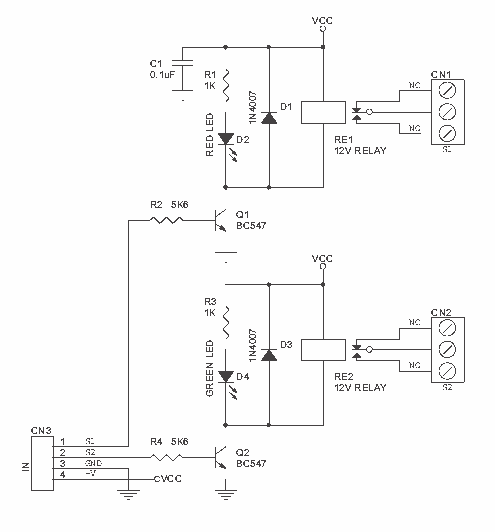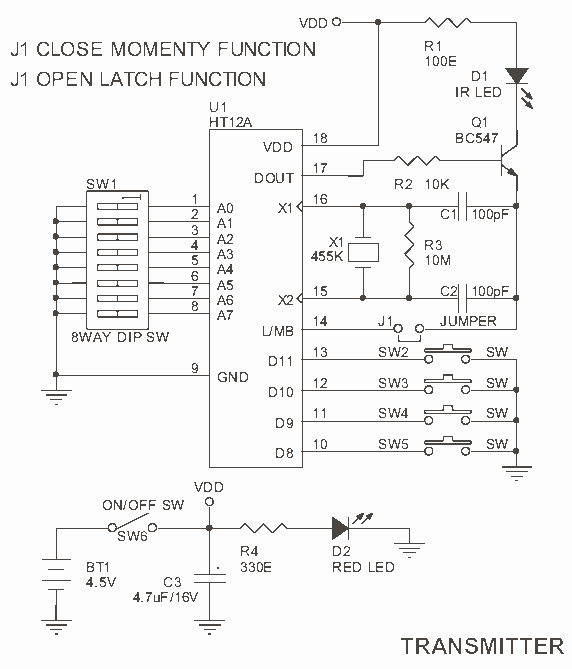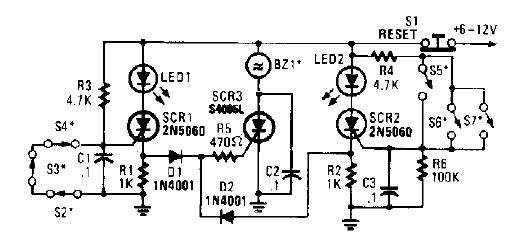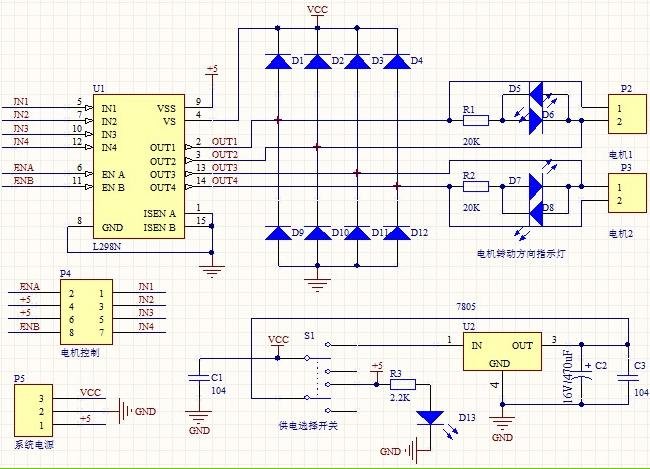
12V Relay Driver


Dual Channel Relay Board is a simple and convenient way to interface 2 relays for switching application in your project. Input - 12 VDC @ 84 mA. Output - two SPDT relay. Relay specification - 5 A @ 230 VAC. Trigger level - 2 ~ 5 VDC. Berg pins for connecting power and trigger voltage. LED on each channel indicates relay status. Power Battery Terminal (PBT) for easy relay output connection. Four mounting holes of 3.2 mm each. PCB dimensions 49 mm x 68 mm
The Dual Channel Relay Board is designed to facilitate the control of two independent relays, making it suitable for various applications such as automation, home appliances, and industrial control systems. The board operates with a power supply of 12 VDC, drawing a current of 84 mA, which is efficient for low-power applications.
Each relay on the board is a Single Pole Double Throw (SPDT) type, rated for a maximum load of 5 A at 230 VAC, allowing for versatile switching capabilities. The triggering mechanism for the relays operates within a voltage range of 2 to 5 VDC, enabling compatibility with various control signals, including those from microcontrollers and other digital devices.
The board is equipped with Berg pins that facilitate easy connections for both power supply and trigger signals. This design choice ensures a secure and reliable connection while simplifying the integration process into larger systems. Each relay channel features an LED indicator that provides visual feedback on the relay's status, enhancing usability during operation and troubleshooting.
For output connections, the board includes a Power Battery Terminal (PBT), which streamlines the process of connecting to external devices or circuits. The physical design of the PCB includes four mounting holes, each measuring 3.2 mm in diameter, which allows for secure installation in various enclosures or mounting surfaces.
The overall dimensions of the PCB are 49 mm by 68 mm, making it compact enough for integration into space-constrained applications while still providing ample functionality. This relay board is an effective solution for projects requiring reliable switching capabilities with straightforward interfacing options.Dual Channel Relay Board is a simple and convenient way to interface 2 relays for switching application in your project. Input - 12 VDC @ 84 mA. Output - two SPDT relay. Relay specification - 5 A @ 230 VAC. Trigger level - 2 ~ 5 VDC. Berg pins for connecting power and trigger voltage. LED on each channel indicates relay status. Power Battery Terminal (PBT) for easy relay output connection. Four mounting holes of 3.2 mm each. PCB dimensions 49 mm x 68 mm 🔗 External reference
The Dual Channel Relay Board is designed to facilitate the control of two independent relays, making it suitable for various applications such as automation, home appliances, and industrial control systems. The board operates with a power supply of 12 VDC, drawing a current of 84 mA, which is efficient for low-power applications.
Each relay on the board is a Single Pole Double Throw (SPDT) type, rated for a maximum load of 5 A at 230 VAC, allowing for versatile switching capabilities. The triggering mechanism for the relays operates within a voltage range of 2 to 5 VDC, enabling compatibility with various control signals, including those from microcontrollers and other digital devices.
The board is equipped with Berg pins that facilitate easy connections for both power supply and trigger signals. This design choice ensures a secure and reliable connection while simplifying the integration process into larger systems. Each relay channel features an LED indicator that provides visual feedback on the relay's status, enhancing usability during operation and troubleshooting.
For output connections, the board includes a Power Battery Terminal (PBT), which streamlines the process of connecting to external devices or circuits. The physical design of the PCB includes four mounting holes, each measuring 3.2 mm in diameter, which allows for secure installation in various enclosures or mounting surfaces.
The overall dimensions of the PCB are 49 mm by 68 mm, making it compact enough for integration into space-constrained applications while still providing ample functionality. This relay board is an effective solution for projects requiring reliable switching capabilities with straightforward interfacing options.Dual Channel Relay Board is a simple and convenient way to interface 2 relays for switching application in your project. Input - 12 VDC @ 84 mA. Output - two SPDT relay. Relay specification - 5 A @ 230 VAC. Trigger level - 2 ~ 5 VDC. Berg pins for connecting power and trigger voltage. LED on each channel indicates relay status. Power Battery Terminal (PBT) for easy relay output connection. Four mounting holes of 3.2 mm each. PCB dimensions 49 mm x 68 mm 🔗 External reference





